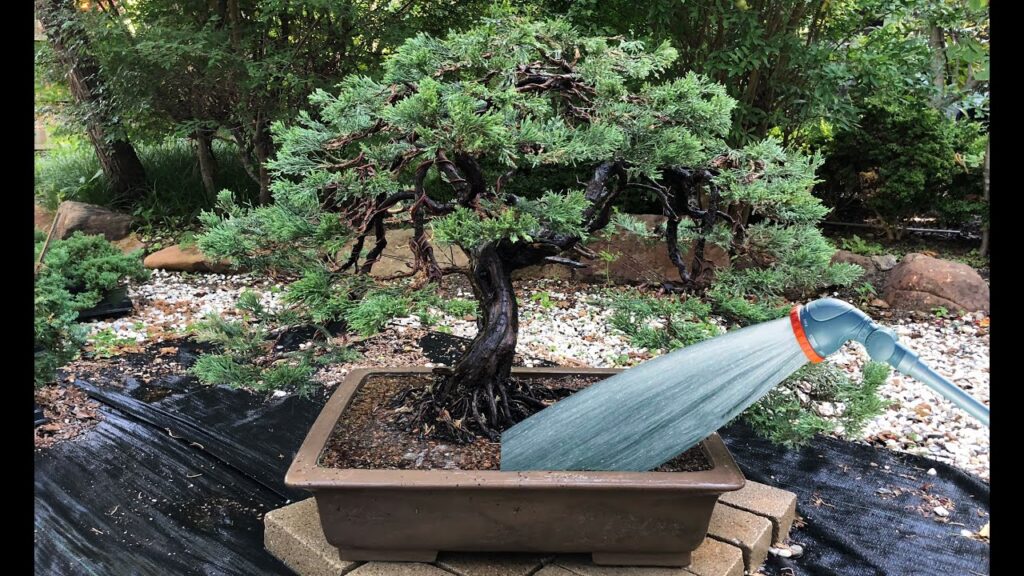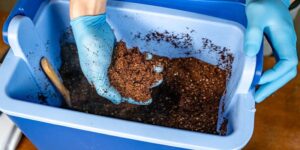
Outdoor: All outdoor trees should have been removed from winter protection and placed on their growing benches. The trees should be receiving as much sun as possible. Watering needs will be high, and all trees will need watering at least once a day. Be sure to saturate the soil at each watering thoroughly. It is good to send a blast of water through the foliage now and then to help dislodge any insects lurking. Keep an eye out for possible insect infestations. The soft new growth on the trees is very attractive to many insects, particularly aphids. If you see a possible problem, identify it and treat it appropriately. Fertilize regularly. Higher nitrogen levels can increase growth and cause leaves to expand to larger sizes. Remember that the recommended rate on the fertilizer package assumes a once-a-month use. Decrease the amount used to make it appropriate for more frequent use. (One teaspoon per gallon once a month is the same as ¼ teaspoon per gallon once a week) Wiring may resume once the new growth ‘hardens.’ Repotting should continue if it is not finished. Candle prune pines by removing ½ to 2/3 of each candle.
Indoor: Tropical trees will need to stay indoors until the night temperatures are consistently above fifty degrees. This is usually late May or early June. Give the trees as much light as possible—water when the soil gets a little dry. As with the outdoor trees, these trees will also need more frequent watering as day-length and temperatures increase. Fertilize regularly. Do not repot at this time.



